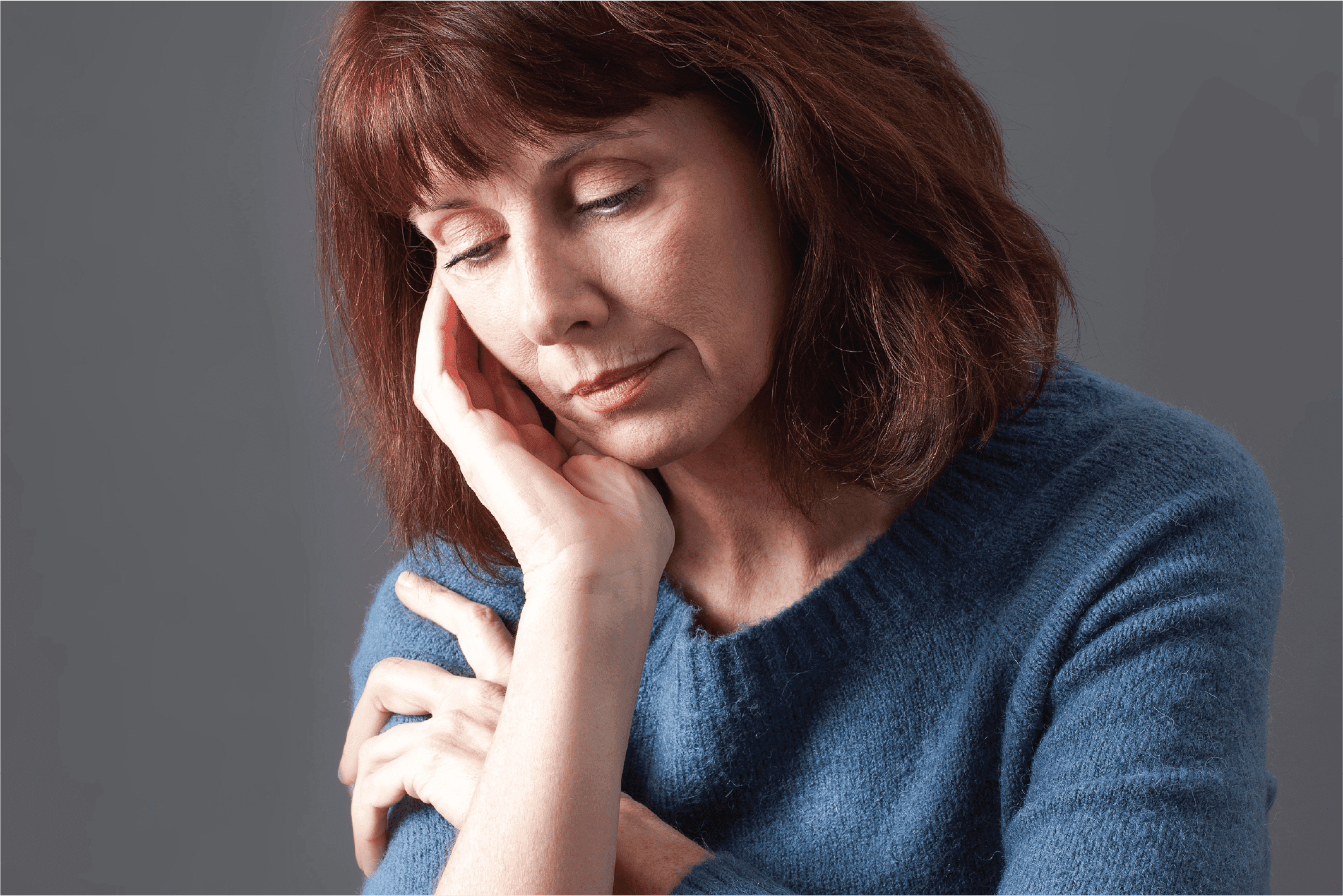5 Reasons why you may be Experiencing Vaginal Dryness

Normally the walls lining the vagina are kept lubricated by fluid that is produced by glands in the cervix. This lubrication provides protection to the female reproductive organs and makes intercourse more comfortable. In fact, during times of arousal, more vaginal secretions are produced, which prevent ulceration and fissures that can be very painful. In cases of vaginal dryness, even gentle friction during intercourse can be very painful. Vaginal secretions keep the vagina supple and moist.
Many women experience periods of vaginal dryness, which can be accompanied by itching and soreness. As well as discomfort during intercourse, vaginal dryness can cause pain during urination. It can cause discomfort when sitting, standing or exercising, having a profound impact on a female’s quality of life. Yet, despite this, it is a problem women are unwilling to discuss, so it often goes undiagnosed and untreated.
The menopause is a major contributor to vaginal dryness, with over half of women aged 50 and older, experiencing some degree of dryness. However, up to 17% of younger women who are premenopausal, will experience vaginal dryness as well. Some of the most common reasons for vaginal dryness are explored below.
1. Menopause
Most women start to experience menopausal symptoms between the ages of 45 and 55 when the ovaries stop producing oestradiol. Some of the most common symptoms of menopause are hot flushes, night sweats and vaginal dryness and itching.
The drop in oestrogen levels results in a reduction in cervical secretions and diminished blood supply to the vagina. As a result, the vagina may start to show signs of atrophy; leading to a thinning of the epithelial lining (outer layer), a loss of elasticity, and possible shortening and narrowing of the vagina. The normal pH of the vagina is slightly acidic, which provides the optimal host environment for the beneficial bacteria that normally help to protect the vagina from harmful infections.
With the loss of oestrogen during the menopause, the pH of the vagina increases (becomes less acidic) and vaginal secretions decrease. This makes it harder for the protective bacteria that normally populate the vagina to survive and propagate, rendering postmenopausal women more susceptible to urinary tract infections. The resulting physiological symptoms are dryness, irritation, itching and pain during sex (dyspareunia) and urination (dysuria). Together, these symptoms are termed the genitourinary syndrome of menopause (GSM).
The most common consequence of GSM is vaginal dryness, affecting between 55% and 75% of postmenopausal women. Unlike other menopausal symptoms, which diminish over time, those affecting the vagina are chronic and progressive, meaning that the sooner women seek help, the better.
Non-hormonal treatments, such as moisturisers and lubricants, do provide relief from mild symptoms of GSM; however, they do not reverse the signs of atrophy and their effectiveness is limited. As a long-term solution, they are probably not ideal. The most effective treatment option for most women experiencing moderate-severe GSM is the application of topical, localised oestrogen.
This can be in the form of cream, vaginal rings or pessaries, which are all applied directly to the affected area. This limits systemic oestrogen exposure, which is beneficial as an excess of this hormone can cause cellular proliferation and increase the risk of reproductive tract cancers. Approximately 90% of women who use a topical oestrogen report improved symptoms. Alternative treatment options include selective oestrogen receptor modulators, which improve the structure and pH of the vagina, and laser therapies.
Laser therapy shows potential as a viable treatment option, improving vascularity and increasing the thickness of the vagina eptithelium. However, longer-term studies are needed to explore the effectiveness of this approach over time.
Prior to commencing any treatment, it is important to talk to your doctor. They will be able to assess your symptoms and devise the most appropriate treatment plan for you. Hormone therapy will not be suitable for everyone.
2. Cancer treatment
Chemotherapy can cause tissue thinning and atrophy in the vagina. Women with early stage breast cancer are often treated with aromatase inhibitors and 74% report reduced vaginal lubrication during treatment and a concurrent decreased libido. These symptoms negatively impact quality of life and can lead to low compliance. Testosterone cream has been shown to improve symptoms of vaginal atrophy in women taking aromatase inhibitors.
Women whose cancer is oestrogen-dependent (also called ER positive), are often given drugs that are designed to reduce or block the body’s response to oestrogen. The sudden loss of oestrogen can result in symptoms that are more intense than those experienced during a normal menopause. Whilst this can be very effective at preventing tumour growth, the side effects caused by an abrupt change in hormone levels, can be significant.
In most cases, normal hormonal activity will recommence once treatment is finished; however, the difficulty comes from providing symptomatic relief whilst treatment is ongoing. Hormonally sensitive cancers are generally incompatible with oestrogen therapy. Moisturisers and lubricants are likely to be the best option for women experiencing vaginal dryness as a consequence of taking hormone blockers.
Women who undergo radiotherapy to the pelvic area are also at increased risk of vaginal dryness. If the ovaries are targeted they may stop producing oestrogen, causing an immediate menopause, with all of its associated symptoms. If the vagina or vulva are targeted specifically, their linings can become irritated, inflamed and tender. The extent and permanence of these issues depends on how stringent the treatment regime is.
3. Hysterectomy (oophorectomy)
When the ovaries are removed during a hysterectomy, known as an oophorectomy, a surgical menopause is induced. Hysterectomies are performed for a variety of reasons; they can be used to remove tumorous tissue in women who have received a cancer diagnosis, as well as a preventative measure for those at high risk of future malignancies. They can also be used as a means of easing chronic, painful heavy periods. Women with severe endometriosis might opt for a hysterectomy, if they cannot control their symptoms through other methods. A hysterectomy is not a decision to be taken lightly, as it does render a female irreversibly infertile.
Even those women who do not have their ovaries removed during their hysterectomy are likely to experience a reduction in circulating hormones. Less oestrogen will lead to reduced vaginal lubrication and a thinner, more fragile vaginal lining. These will both contribute to the sensation of vaginal dryness.
A surgical menopause brings with it many of the symptoms of a normal physiological menopause, including GSM and vaginal dryness. Oestrogen withdrawal is immediate and abrupt and, as such, symptoms can be more intense than those experienced during a normal menopause. Hormonal therapy can be used, provided the woman is not at increased risk of developing other hormonally-sensitive carcinomas.
4. Diabetes
The most common sexual health issue in females with diabetes is reported to be vaginal dryness. It is thought that high blood sugar levels cause damage to the blood vessels and nerves that supply the vagina, resulting in a lack of lubrication. In fact, 60-70% of people with diabetes experience nerve damage.
Nerve damage can contribute to sexual dysfunction by diminishing the normal response to sexual stimuli; one consequence of this is reduced vaginal lubrication. Reduced blood flow to the vagina can also cause a loss of sensation, making arousal difficult. Whilst the mechanisms remain to be fully elucidated, another theory for the reduced vaginal secretions in females with diabetes is an imbalance in hormone levels across the body. As described in detail above, oestrogen deficiencies can have a significant impact on the health of the vagina.
Understanding more;
It is already well established that diabetes can have a negative effect on a male’s sexual health, having a particularly strong association with erectile dysfunction. However, the impact of the condition on a female’s sexual behaviour and reproductive system is less well defined. A long-term epidemiological study of males and females with Type 1 Diabetes demonstrated that 35% of females reported sexual dysfunction, and of these almost half (47%) had lubrication issues.
The first line approach for resolving any diabetes-related symptoms is to attempt to keep blood sugar levels under control. If this is successful, any associated symptoms should be minimised. The use of vaginal lubricants and moisturisers may also be recommended.
5. Sjögren’s syndrome
Sjögren’s syndrome is an autoimmune disease affecting the moisture-producing exocrine glands throughout the body. The exact aetiology is unknown, but as with most autoimmune diseases there is likely to be a genetic link, as well as environmental triggers. Sjorgen’s syndrome is also 10 times more likely to affect women than men, which suggests a hormonal component. In fact, symptoms often start when a person is in their 40s or 50s, meaning that the condition is frequently misdiagnosed as menopause.
The syndrome is usually diagnosed when patients present with lacrimal and salivary gland dysfunction, causing dry eyes and a dry mouth respectively. As well as affecting the eyes and mouth, the condition can also cause problems with the thyroid gland, the lungs, the gastrointestinal system, the skin and the genital tract. The most common genitalia abnormality is reduced vaginal secretions, which manifests as chronic dyspareunia.
…..more on Sjögren’s syndrome.
There are no vaginal glands for Sjögren’s to act on directly, but women with the condition often have an altered vaginal epithelium, inflammatory changes in the vagina and chronic cervicitis (inflammation of the cervix). These factors, either alone, or in combination, contribute to the vaginal dryness experienced by women with Sjögren’s syndrome.
As the condition can affect various exocrine glands, treatment is symptom-dependent. Women who have vaginal dryness can try moisturisers, lubricants and localised oestrogen therapy. They may, however, need other medications to treat their other symptoms.
Other causes of vaginal dryness
In addition to these major conditions, transient lifestyle factors can also affect the production of vaginal secretions. Women who are breastfeeding may experience vaginal dryness as their body enters a state of hyperprolactinemia, which causes a reduction in oestrogen levels. Certain medications, including cold and flu remedies, can dry out mucous membranes, reducing secretions throughout the body. Some women find a reduction in vaginal secretions with oral contraceptive use, although this seems to be brand-specific and varies with duration of use. Newer brands appear to cause less vaginal dryness.
Vaginal douching is the process of intravaginal cleaning with a solution. Common amongst some cultures, particularly African Americans, there is substantial controversy with regards to how safe it is. Evidence suggests that douching can perturb the vaginal microbiome and increase the risk of infection and pelvic inflammatory disease. One of the predominant symptoms of infection in the genitourinary tract is vaginal dryness. Douching should definitely not be performed whilst pregnant. The use of strongly perfumed soaps and hygiene products can also be detrimental to the health of the vagina.
Women who experience vaginal dryness should also be encouraged to adopt lifestyle changes, such as reducing stress and stopping smoking, as these can both exacerbate the condition. Regular intercourse can also improve blood circulation.
Sources:
- Archer, David F., et al. “A Randomized, Multicenter, Double-Blind, Study to Evaluate the Safety and Efficacy of Estradiol Vaginal Cream 0.003% in Postmenopausal Women with Vaginal Dryness as the Most Bothersome Symptom.” Journal of Women’s Health, vol. 27, no. 3, Mar. 2018, pp. 231–237., doi:10.1089/jwh.2017.6515.
- “Diabetes and Sexual Problems – in Women.” Diabetes UK, https://www.diabetes.org.uk/guide-to-diabetes/complications/sexual-problems-women.
- Enzlin, P., et al. “Sexual Dysfunction in Women With Type 1 Diabetes: Long-Term Findings from the DCCT/ EDIC Study Cohort.” Diabetes Care, vol. 32, no. 5, May 2009, pp. 780–785., doi:10.2337/dc08-1164.
- Gandhi, Jason, et al. “Genitourinary Syndrome of Menopause: an Overview of Clinical Manifestations, Pathophysiology, Etiology, Evaluation, and Management.” American Journal of Obstetrics and Gynecology, vol. 215, no. 6, Dec. 2016, pp. 704–711., doi:10.1016/j.ajog.2016.07.045.
- Lee, Jean-Jasmin M.l., et al. “Oral Contraception and Female Sexual Dysfunction in Reproductive Women.” Sexual Medicine Reviews, vol. 5, no. 1, Jan. 2017, pp. 31–44., doi:10.1016/j.sxmr.2016.06.001.
- Maiorino , M I, et al. “Diabetes and Sexual Dysfunction: Current Perspectives.” Diabetes, Metabolic Syndrome and Obesity: Targets and Therapy, vol. 7, 6 Mar. 2014, pp. 95–105., doi:10.2147/dmso.s36455.
- Martino, J. L. “Vaginal Douching: Evidence for Risks or Benefits to Womens Health.” Epidemiologic Reviews, vol. 24, no. 2, 2002, pp. 109–124., doi:10.1093/epirev/mxf004.
- Melisko, Michelle E., et al. “Vaginal Testosterone Cream vs Estradiol Vaginal Ring for Vaginal Dryness or Decreased Libido in Women Receiving Aromatase Inhibitors for Early-Stage Breast Cancer.” JAMA Oncology, vol. 3, no. 3, 2017, p. 313., doi:10.1001/jamaoncol.2016.3904.
- Mulherin, Diarmuid M., et al. “Sjogrens Syndrome in Women Presenting with Chronic Dyspareunia.” BJOG: An International Journal of Obstetrics and Gynaecology, vol. 104, no. 9, Sept. 1997, pp. 1019–1023., doi:10.1111/j.1471-0528.1997.tb12060.x.
- Nair, Jj, and Tp Singh. “Sjogrens Syndrome: Review of the Aetiology, Pathophysiology a Potential Therapeutic Interventions.” Journal of Clinical and Experimental Dentistry, vol. 9, no. 4, 1 Apr. 2017, pp. e584–e589., doi:10.4317/jced.53605.
- Pałubska, Sylwia, et al. “Hyperprolactinaemia – a Problem in Patients from the Reproductive Period to the Menopause.” Menopausal Review, vol. 16, no. 1, Mar. 2017, pp. 1–7., doi:10.5114/pm.2017.67364.
- “Sexual Health Issues in Women and Cancer Treatment – Side Effects.” National Cancer Institute, https://www.cancer.gov/about-cancer/treatment/side-effects/sexuality-women.
- “Vaginal Dryness.” Women’s Health Concern, 7 Aug. 2018, https://www.womens-health-concern.org/help-and-advice/factsheets/vaginal-dryness/.
- “What Is Sjögren’s Syndrome?” Society for Women’s Health Research, https://swhr.org/what-is-sjogrens-syndrome/.
- Yıldız, Çağlar. “Primary Sjögren’s Syndrome Adversely Affects the Female Sexual Function Assessed by the Female Sexual Function Index: A Case-Control Study.” Archives of Rheumatology, vol. 32, no. 2, 12 Feb. 2017, pp. 123–128., doi:10.5606/archrheumatol.2017.6066.










